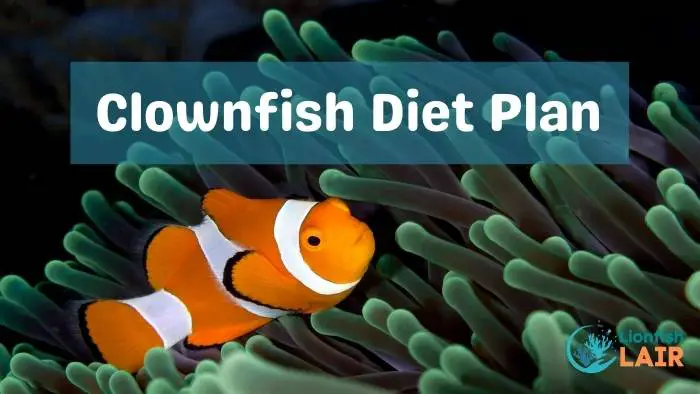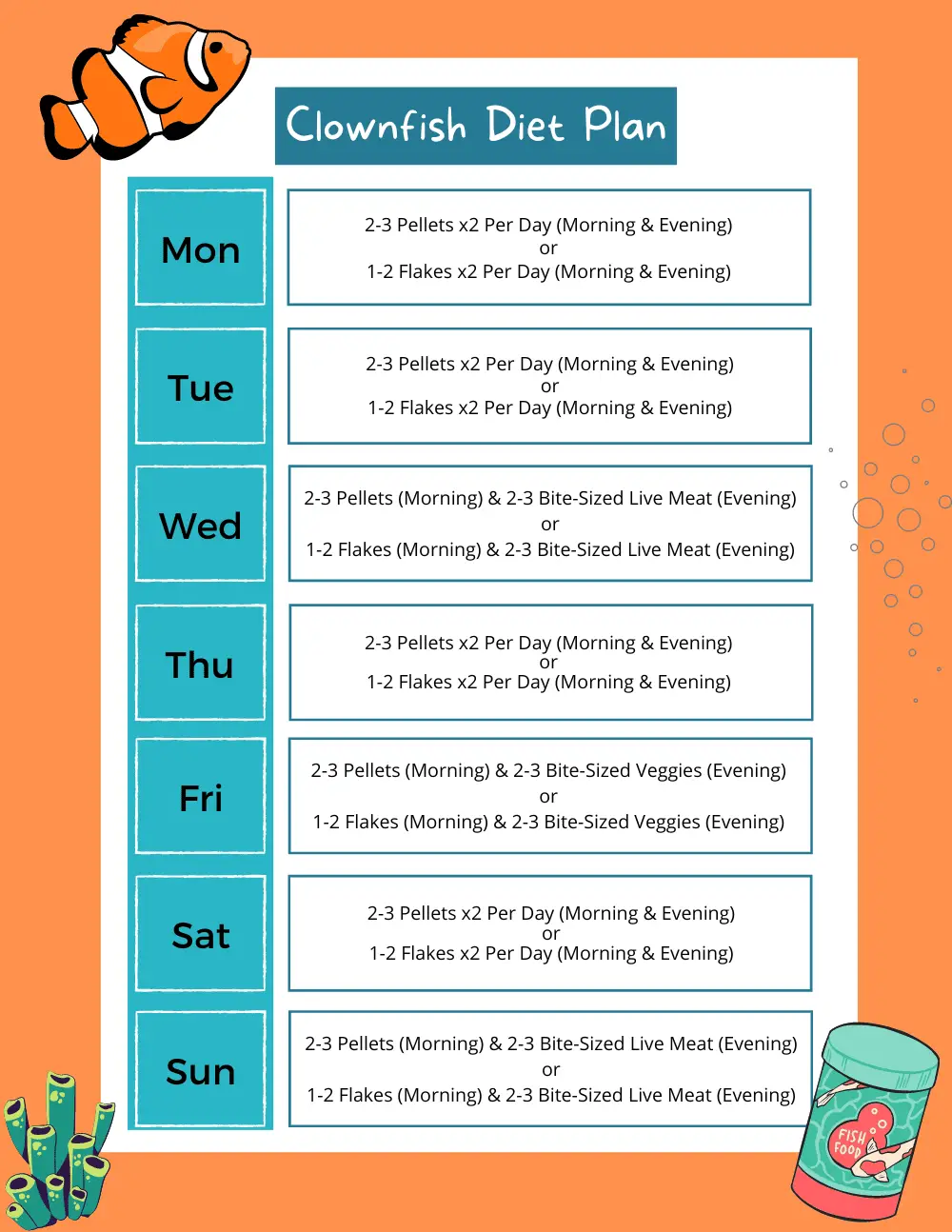Diet and feeding are single handily the most important aspects of owning a healthy and thriving fish community, there are no two ways about it. The diet needs to be considered way before your fish even enter their aquarium.
All fish are different, requiring different types of food due to unique diets and eating habits. In this guide, we will be running through the diet of clownfish, what they eat, and how often you should be feeding them!

To make life even easier for you, a new clownfish owner, or perhaps an aspiring clownfish owner, we have created a downloadable and free clownfish diet and feeding schedule.
This is a reference for you to follow when feeding your own clownfish and has been created with the clownfish's best interests at heart, ensuring their diet is balanced and they are being fed at the right times.
What do Clownfish Eat?
Firstly, it is important to mention that clownfish are omnivores, which means that their diet should be a balanced mixture of both meat-based foods, and plant-based food.
You can easily acquire these foods in the form of pellets, flakes, live, dried, or frozen. We would say that keeping their diet consistent, mainly feeding your clownfish flakes or pellets with the additions of meat and veggies as a treat will keep them nice and healthy.
Clownfish also enjoy eating algae, and will help out if your aquarium has an algae problem. However, they are not obsessed with algae, and will only eat it if they feel comfortable and are hungry - don't expect them to become your main algae eaters.
Something that you can do to ensure that they are getting the nutrients from algae is feed them algae pellets or flakes.
What do Clownfish Eat in the Wild?
Wild clownfish typically reside in the Indian ocean, within shallow reefs budding with life. Part of their diet is provided by their host anemone, in the form of dead fish and other life forms that have been trapped by the tentacles.
Clownfish are not fussy, unlike a lot of other marine fish, which makes them incredibly un-picky when it comes to their food in the wild. Due to them being omnivores too, anything goes seemingly, eating anything they can find or that will fit in their mouths!
Their diet in the wild looks a bit like this: zooplankton, bacteria, tiny critters, copepods, fish eggs, small shrimp, other invertebrates, larvae, and even baby fish.
What do Clownfish Eat in Captivity
Due to them having such a diverse diet in the wild, they are not fussy eaters at all when in an aquarium environment, which is one less thing for you to worry about!
You can feed them a whole variety of different foods that they will happily accept! What we would suggest is keeping a consistent pellet or flake diet for the most part, and mixing in the occasional treat day where you feed them live foods and veggies.

So, high-quality and balanced marine pellets or flakes, with frozen, dried, or live versions of brine shrimp, mysis, cyclops, krill, bloodworms, and more. They enjoy algae in the wild too, so, the occasional algae pellet will be much appreciated.
What Do Baby Clownfish Eat?
Baby clownfish are not easy to feed in captivity due to their tiny size - cultured rotifers are good options as they are tiny little organisms and contain nutrients for the baby fish.
However, this requires having to make your own culture of them before the eggs have hatched. So, it is certainly advisable that you to create your own, preferably as soon as you discover your clownfish is pregnant.
Clownfish do have teeth, however, the baby clownfish need to wait until they are larger and more developed to put them to full use.
Once the fry reaches a certain size, you can feed them small fry foods, and also small pellets or crushed flakes.
How Much Should I Feed my Clownfish?
From our experience, clownfish should be fed twice a day, once in the morning and once in the early evening. If you have young and growing clownfish, it is fine to up the feeding to 3 times a day, although you should reduce their servings ever so slightly.
Clownfish are notorious beggars, they are smart fish, and will soon realize that you are the only way they are getting a good meal. So, whenever you wander over to check them outside of eating times, don't be surprised if they act hungry and start begging for food - you must resist the urge to overfeed them!
It is easy to tell if your clownfish is being underfed or overfed; check the underside of your fish's belly, if it is looking sunken and skinnier than usual, you can probably increase their food intake, but only slightly.
Now, if you see that their belly is looking swollen and inflamed, they are eating too much, and you will simply need to reduce their portion sizes.
Downloadable Clownfish Diet Plan (Free Download)
Now, you have an idea of what your clownfish will need to be eating in order to maintain a healthy and balanced diet, which is great!
You may be still wondering though, how many days should I feed them pellets or flakes, and how many treat days do my clownfish deserve?
Well, have no fear, we have created you a free and downloadable daily clownfish diet plan so that you know what to feed them and how much to feed them on specific days of the week.
You can either download the smaller version as the image you see on this page or download the larger PDF below:

Final Thoughts
There are very few moments as a hobbyist that are as satisfying as owning your own thriving clownfish aquarium. However, this is only achieved if you provide them with all that they need from an aquarium perspective, and more importantly, a diet perspective.
Fortunately, clownfish are a dream to feed as they are not fussy and are very experimentative with their diet, so, don't bore them to death by only feeding them pellets and flakes! We also hope that the graphical diet plan will prove to be a useful resource for you guys going forward.

